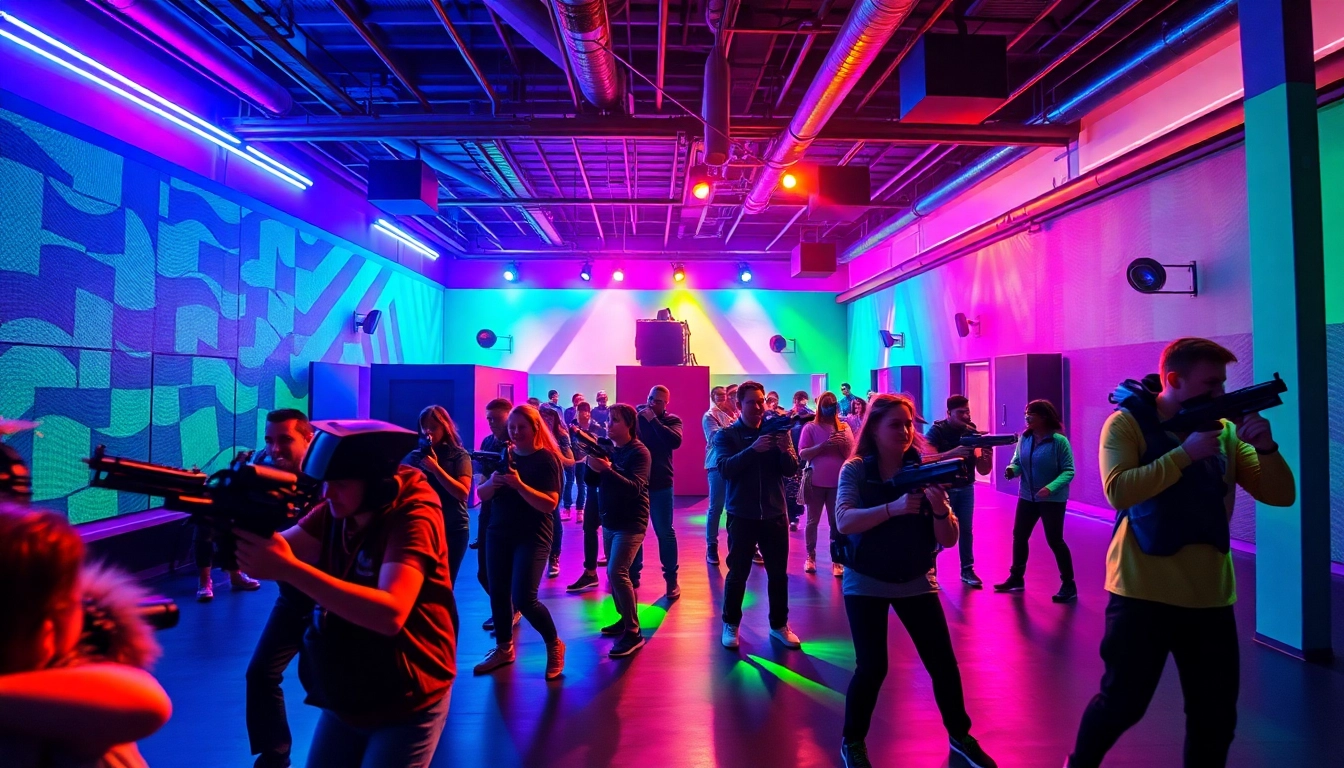The Basics of Laser Tag
What is Laser Tag?
Laser tag is an exciting, interactive game that combines elements of physical activity, strategy, and technology. In this fast-paced game, participants use infrared-emitting light guns to tag opponents, typically within an enclosed arena. Players must work in teams to score points by “tagging” each other while also achieving specific objectives, which can range from capturing a flag to outlasting the opposing team. The rules differ across venues, but the fundamental goal remains the same: teamwork, strategy, and, most importantly, fun!
History and Evolution of Laser Tag
The origins of laser tag can be traced back to the late 1970s, inspired by militaristic training methods utilizing laser technology. The first commercial laser tag system was developed in 1986 by George Carter III, who launched the game “Photon” in Dallas, Texas. It quickly gained popularity, and the 1990s saw a surge of laser tag arenas emerge in shopping malls across the United States, introducing the concept to a wider audience. Over the years, advances in technology have led to enhanced gameplay experiences, transforming laser tag into an immersive adventure with elaborate themes, advanced scoring systems, and realistic equipment.
Different Types of Laser Tag Systems
Laser tag systems can broadly be categorized into two types: indoor laser tag and outdoor laser tag. Indoor laser tag typically features elaborate arena designs with maze-like structures, atmospheric lighting, and sound effects to enhance the gameplay experience. Conversely, outdoor laser tag often utilizes natural terrains and may incorporate additional elements such as inflatable barriers and tactical gear. Each system has its own unique set of rules and gameplay options, catering to various age groups and skill levels.
How to Choose the Right Laser Tag Venue
Factors to Consider When Selecting a Venue
When choosing a laser tag venue, several factors should be taken into account to ensure the best experience for players:
- Location: Choose a venue that is conveniently located for participants.
- Facility Size: The size of the arena can affect gameplay. Larger arenas provide more opportunities for strategy and movement.
- Equipment Quality: Ensure that the venue uses modern, well-maintained equipment that enhances the gameplay experience.
- Pricing: Compare pricing structures, including per game, package deals, and group discounts.
- Safety Regulations: Select a venue that prioritizes safety standards and follows industry regulations.
Indoor vs. Outdoor Laser Tag: Pros and Cons
Both indoor and outdoor laser tag have unique advantages and disadvantages:
- Indoor Laser Tag:
- Pros: Weather-independent, controlled environment, immersive designs.
- Cons: Limited space, can become crowded, may have restrictions on group sizes.
- Outdoor Laser Tag:
- Pros: Natural obstacles, larger areas for gameplay, opportunities for incorporating tactical skills.
- Cons: Weather-dependent, potential hazards like uneven ground, insects, and wildlife.
Popular Laser Tag Locations
Some of the most popular laser tag venues offer not just the game itself but a range of additional activities. For example, venues like laser tag centers often integrate experiences such as arcade games, virtual reality, and food services, making them ideal for family outings or birthday parties. Key locations to check out may include dedicated entertainment centers in urban areas or themed adventure parks that offer a multi-faceted approach to leisure activities.
Laser Tag Gameplay Strategies
Team Dynamics and Communication
Effective teamwork is crucial for success in laser tag. Players should establish clear roles, whether it be front-line attackers, snipers, or defenders. Communication during play is vital; using hand signals and pre-planned strategies can greatly enhance coordination. Teams that communicate effectively can adapt their formal strategies in response to the evolving dynamics of the game, giving them a competitive edge.
Tactical Positioning and Movements
Understanding positioning can dramatically impact how well a team performs. Players should be mindful of cover and elevation in the arena, using walls, barriers, and other structures to shield themselves from incoming shots. Additionally, staggering positions can mitigate risk while maximizing angles for attack; players should continuously be on the move to avoid becoming an easy target. Practicing different movement techniques can help develop agility and improve reaction times during gameplay.
Understanding Game Modes and Objectives
Lasertag gameplay often consists of various modes, including team deathmatch, capture the flag, and king of the hill. Familiarity with these modes and their specific objectives allows players to strategize effectively. It’s crucial to know the objectives before entering a match, as this understanding will dictate gameplay style, ranging from aggressive tactics in offensive modes to defensive plays in capture scenarios.
Safety and Regulations in Laser Tag
Equipment Safety Guidelines
Safety is a top priority during laser tag sessions. Proper use and handling of equipment are essential; players should be instructed on how to wear gear correctly. Equipment should be regularly inspected and maintained to avoid malfunctions. Additionally, laser tag fields should clearly post safety guidelines, including rules about physical contact and expected behavior during gameplay.
Age Restrictions and Recommendations
Many laser tag venues have age restrictions, typically requiring players to be above a certain age for safety reasons. While family-friendly, equipment sizing and gameplay complexity may not suit younger children, especially those under six. Venues usually provide age recommendations based on the intensity of gameplay and equipment size, making it essential to abide by these guidelines to ensure a fun and safe experience for all.
Emergency Protocols During Play
In the event of an emergency, clear protocols should be established. Venues should have designated staff members trained to respond to injuries or safety concerns quickly. Players should also be informed of emergency exits prior to gameplay, allowing them to exit calmly and safely if needed. Creating an environment of awareness ensures everyone remains vigilant about their surroundings and the well-being of their teammates.
Planning a Laser Tag Event
Organizing Laser Tag Parties and Events
Planning a successful laser tag event requires structured organization. Start by determining your guest list, and reserve a venue that can accommodate your group comfortably. Determine the event timeline, including game durations, breaks for refreshments, and any additional activities like team-building exercises or themed challenges. Inviting a mix of skill levels can foster camaraderie and make the experience more engaging for everyone involved.
Incorporating Themed Gameplay
Themed laser tag events can elevate the experience, turning an ordinary game into an extraordinary adventure. Consider themes that encourage creativity and engagement, such as sci-fi universes, historical battles, or even fantasy quests. Incorporating themed props, music, and costumes can enhance immersion, making the event more memorable. Utilize creative game scenarios that fit the theme, driving participants to strategize uniquely according to the context of the narrative.
Pricing and Group Discounts
Budgeting for a laser tag event is crucial; it can affect how many games are played, the number of guests invited, and available refreshments. Most venues offer group discounts, providing cost-effective solutions for larger parties. It’s beneficial to compare various services and ask for packages that combine laser tag with other activities or food discounts, enhancing the overall value of the event.



